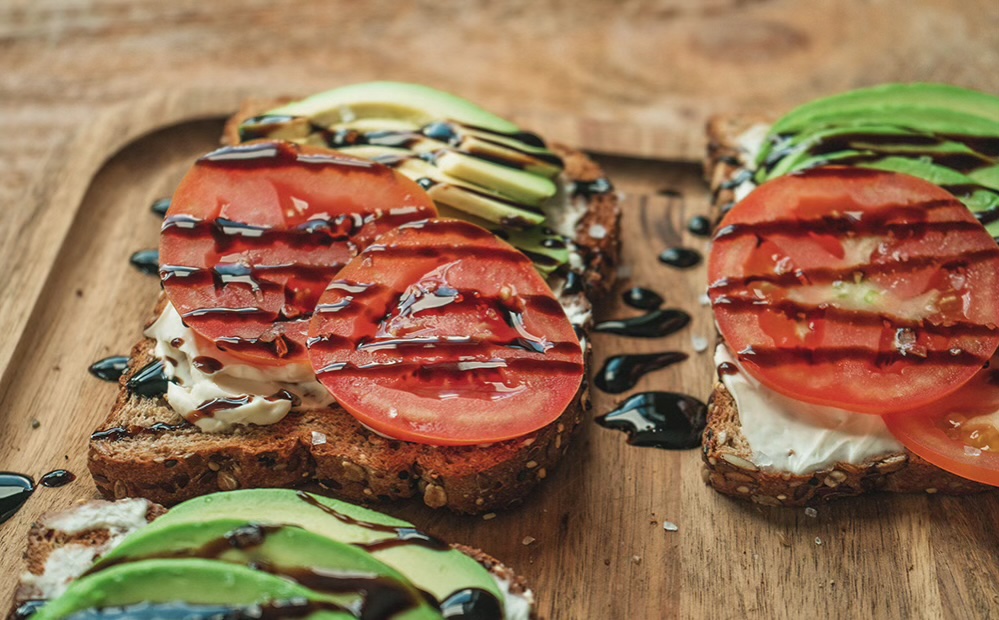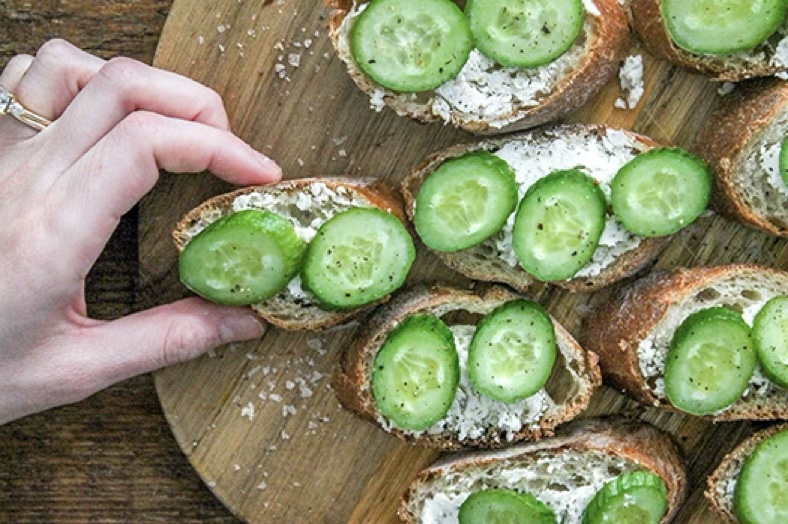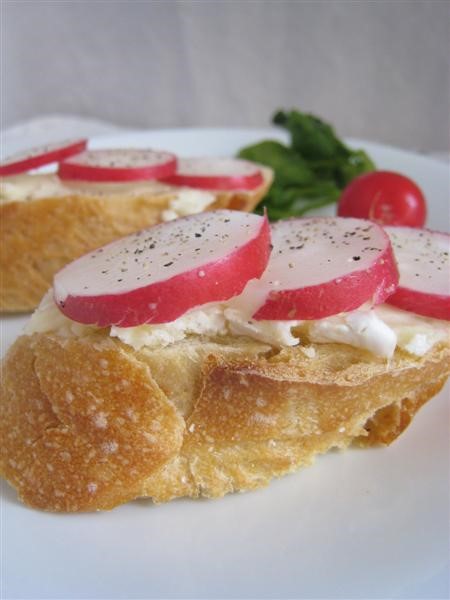The Simple Pleasure of Open-Faced Sandwiches
Do you ever mess around with open-faced sandwiches? They offer a food-prep challenge that gets my attention. Besides the obvious need to ensure that the ingredients used are fresh, flavorful, and complementary, there’s a presentation issue. Because all ingredients are highly visible, this sandwich calls for some “care and flair” when putting it together.

Like a lot of today’s food styles, the open-face sandwich has a history. Also known as bread basers, bread platters, half-widges or tartines, it had a simple formula: a slice of bread with one or more toppings. It dates back to the Middle Ages when people used coarse, dry bread as a plate or a bowl. At the end of the meal, the diner would eat the food-soaked bread, feed it to their livestock, or charitably give it to beggars. Over time though, the bread became incorporated into the meal because the “bread plate” was often the tastiest part!
History shows it was the Scandinavians that perpetuated the open-faced sandwich as a meal tradition. By the 17th century, it became a popular way to eat beef that hung from the rafters in taverns throughout the Netherlands. Beef was cut into thin slices and placed atop a single piece of buttered bread. But it was the Danish that turned it into an artform, calling their version smørrebrød (“buttered bread”).
A national favorite smørrebrød is Cucumber Goat Cheese Toast. It’s traditionally made this way:

Drizzle baguette slices with extra virgin olive oil.
Season with salt and pepper and toast them on a sheet pan under the broiler for about three minutes, or until the edges are browned.
Spread goat cheese on the toasted bread.
Top cheese with thin slices of cucumbers, perhaps cut on the diagonal for pretty presentation.
Finish each slice with a drizzle of raw honey and season with more salt and pepper if desired.
Today variations of open-faced meals and snacks are found across numerous cultures. Bruschetta, crostini, tostadas, and canapés are actually types of open-faced sandwiches.
It’s a sandwich that blossoms with creativity. At our house we like to dice and dress tomatoes with garlic, olive oil and fresh basil, then add some sliced or diced ripe avocado sprinkled with salt or garlic powder. Scrumptious! And you can also add some scrambled egg for a satiating grab-and-go breakfast.

While not an earth-shattering dish, the open-faced sandwich is a lovely dish. And its simplicity makes it even more attractive, with us limited only by our imaginations as to flavor and texture combinations!
To close, here’s a truly simple opened-faced sandwich recipe that might get your attention. Besides being delicious, it’s unique. How often do you find a recipe that uses just radishes, cheese, bread, and a smidge of seasoning? Give it a try and tell us what you think.

One note: The recipe calls for French Breakfast Radishes. These are simply an elongated variety of radish with a distinctive scarlet-red body and white tip. They are known for their mild, slightly sweet, and peppery flavor, along with a crisp texture.
FRENCH BREAKFAST RADISH AND BRIE OPEN-FACED SANDWICH

1/2-inch-thick baguette or Italian bread slices
brie cheese cut into thin slices
French Breakfast Radishes cut into thin slices
sea salt to taste
freshly ground black pepper to taste
Directions:
1. Preheat oven to 350 degrees.
2. Place the slices of break on a baking sheet and top each with brie cheese -- about 1 to 1Ω ounces per slice.
3. Bake 5-7 minutes, or until the cheese is melted enough to spread.
4. Remove from the oven and use a knife to spread the cheese over each slice.
5. Top with thin slices of radish.
6. Finish with sprinkle of sea salt and freshly ground black pepper.
2. Place the slices of break on a baking sheet and top each with brie cheese -- about 1 to 1Ω ounces per slice.
3. Bake 5-7 minutes, or until the cheese is melted enough to spread.
4. Remove from the oven and use a knife to spread the cheese over each slice.
5. Top with thin slices of radish.
6. Finish with sprinkle of sea salt and freshly ground black pepper.
Recipe formatted with the Cook'n Recipe Software from DVO Enterprises.
 Alice Osborne
Alice Osborne
Weekly Newsletter Contributor since 2006
Email the author! alice@dvo.com
